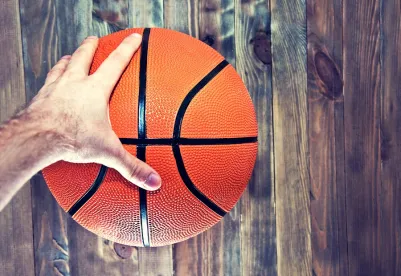After a very short off-season (71 days to be exact), the NBA is gearing up to commence the new 2020/21 season on 22 December with a 72-game regular season schedule. In the interim, fans can enjoy the NBA Draft and an unusually short free agency period.
In order to facilitate plans to begin a new season, the NBA’s Board of Governors (made up of the 30 NBA team owners) and the players approved the plans by majority, including changes to the collective bargaining agreement (CBA).
Between now and the beginning of the season
The trade moratorium was lifted on 15 November. This signals the green light for NBA teams to trade players and assets. Some blockbuster trades have already been agreed with many more expected.
The NBA Draft will be live on 18 November. The pandemic limited opportunities for NBA teams to scout prospects. In normal circumstances, team scouts will watch prospects and team general managers will become more involved later in the process as the draft approaches through the combine (where prospects workout before NBA teams) and private workouts with the teams. The cancellation of the March Madness NCAA tournament has also left prospects with less exposure.
Free agency is scheduled to commence from 20 November. This is the date on which out-of-contract players can officially enter discussions with other teams with a view to signing a new contract. There is a two-day moratorium so free agents cannot actually sign with teams until 22 November.
The season will commence on 22 December in time for the Christmas period. The Christmas period is typically one of the NBA’s most lucrative and most-watched periods. Reports suggest that this could be worth up to $500,000,000 in broadcasting revenue, which will certainly help the NBA recover losses sustained due to the pandemic.
Changes to the CBA
The virus has predictably hurt the NBA’s revenue potential and the league has sought to manage the unprecedented situation by making adjustments to the existing CBA.
Annual revenue (or, Basketball Related Income (BRI)) determines the revenue projections for upcoming seasons. The projection of BRI for the 2019/20 NBA season was just over $8bn but the actual BRI for the season was $6.865bn. These projections determine the salary cap (i.e. the amount players are paid) and the luxury tax threshold (i.e. the amount teams can spend on players until they are taxed). The projections are then compared against the actual BRI for that year. Under the CBA, players are entitled to 49-51% of BRI.
The NBA has set out that the salary cap and the luxury tax threshold for the new season will remain the same as last season. It is important to keep the cap roughly at the same level to ensure consistency in the free agency market. In 2016, after the league entered into new lucrative broadcasting deals, the salary cap for the 2016/17 season increased dramatically from $70 million the previous season to $94.1 million. This skewed the market and inflated players’ value: teams were paying players record contracts on multi-year deals because they could. Shortly after, some teams realised that they had overpaid and were stuck with bad contracts. As such, the NBA does not want to skew the free agent market this year by imposing a dramatic decrease on the salary cap. If the NBA decreased the cap this year because it anticipated a shortfall in BRI, teams would have less money to spend on free agents and such free agents would be at risk of being offered much smaller salary packages, effectively depressing their value. For these reasons, it is business as usual.
The NBA has imposed a tax break on tax-paying teams this season. The CBA originally provided that, where team salary exceeds the luxury tax threshold ($132,627,000), such team will pay tax on every dollar over the threshold. The tax rate increases depending on how much a team is over the threshold. This is a deterrent for teams signing multiple players with high value contracts. The Golden State Warriors currently have four players committed to $130,100,000 between them, meaning the Warriors will most definitely be a tax-paying team this season. However, this tax break lends the Warriors an advantage in that they may not be taxed so heavily. Some reports suggest that the Warriors could save up to $50,000,000 in tax payments this year.
There lies a risk that the BRI for the 2020/21 season will actually be less than that for the 2019/20 season. The season was suspended in March, meaning fans were in attendance from October until March. This year, the pandemic is still widespread in the US, which will affect fan attendance from the beginning of the season and potentially for the entire season. The league is not operating within a bubble as it did in Disneyland so the risk of COVID transmission is much greater this season, causing cancellations and disruptions to the schedule again. Whilst the NBA pulled off a successful resumption of the 2019/20 season, this year poses a greater task.
Other issues
Force majeure.
The CBA contains a force majeure clause in Article XXXIX, which entitles the NBA to terminate the CBA if a force majeure event (i) makes it impossible for the NBA to perform its obligations, (ii) frustrates the underlying purpose of the Agreement, or (iii) makes it economically impracticable for the NBA to perform the obligations under the Agreement. Under English law, force majeure does not typically cover instances where it simply becomes more difficult or more expensive to perform contractual obligations. However, the clause is drafted widely here, granting the NBA termination rights even where performance of its obligations may be possible but is ultimately economically impracticable. In this event, the NBA can terminate the CBA on 60 days’ notice to the NBPA and the parties will engage in good faith negotiations for the purposes of entering into a successor agreement. As such, the NBA does hold a get out of jail card if Coronavirus continues to materially and adversely impact the state of play. It won’t necessarily have to continue paying players if the season is interrupted again but this is a card that the NBA will be incredibly reluctant to invoke.
Team relocations.
The Canadian government, under its current Coronavirus travel restrictions, requires non-essential travellers to quarantine for two weeks upon arrival in Canada. It would be impractical for NBA teams to meet this requirement when visiting Toronto to play the Toronto Raptors. As such, the Raptors are currently considering relocating to the US for the season. Rumours suggest Kansas City and New Jersey as possible destinations. This presents a number of challenges for the franchise: what arena will it play in, where will it house its players and will the players’ families be able to join them? This, on the other hand, presents an opportunity for cities to show the NBA that they can be the home of the next expansion or relocation franchise in the future.




 />i
/>i

